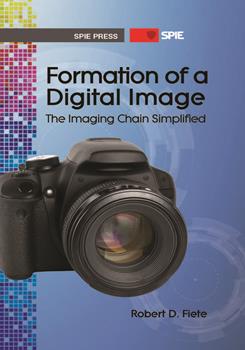|
6.1 Turning Light into a Digital Image After the optics has formed an image, we need a way to record the image so that we can keep those bad-hair-day memories alive. An image is recorded using the aptly named imaging sensor because it senses the light and converts it into a form that can be recorded. Film was the traditional sensor for cameras, but it is quickly becoming one of those things that grandparents talk about: "When I was your age we used something called film!" For those young readers who have never used film, it is worth noting that film contained light-sensitive silver-halide crystals that blackened when exposed to light. Although film served well as a sensor, it was inconvenient because it had to be kept in the dark to prevent unwanted exposure, and the images couldn't be seen until the film was treated with chemicals to produce the developed film negative. It was a negative image because a brighter light turned silver-halide crystals darker; thus the dark objects were light and the light objects were dark. The unexposed film was transparent, so the regions that grew darker from exposure became less transparent. A positive image was formed by shining light through the developed film onto paper treated with silver-halide crystals, so the bright areas of the negative (that corresponded with the dark regions in the scene) turned the paper dark. Most cameras today use digital sensors, which provide real-time electronic images that can be shared and stored on a computer quickly and easily, and without all that mess. |
|
|


